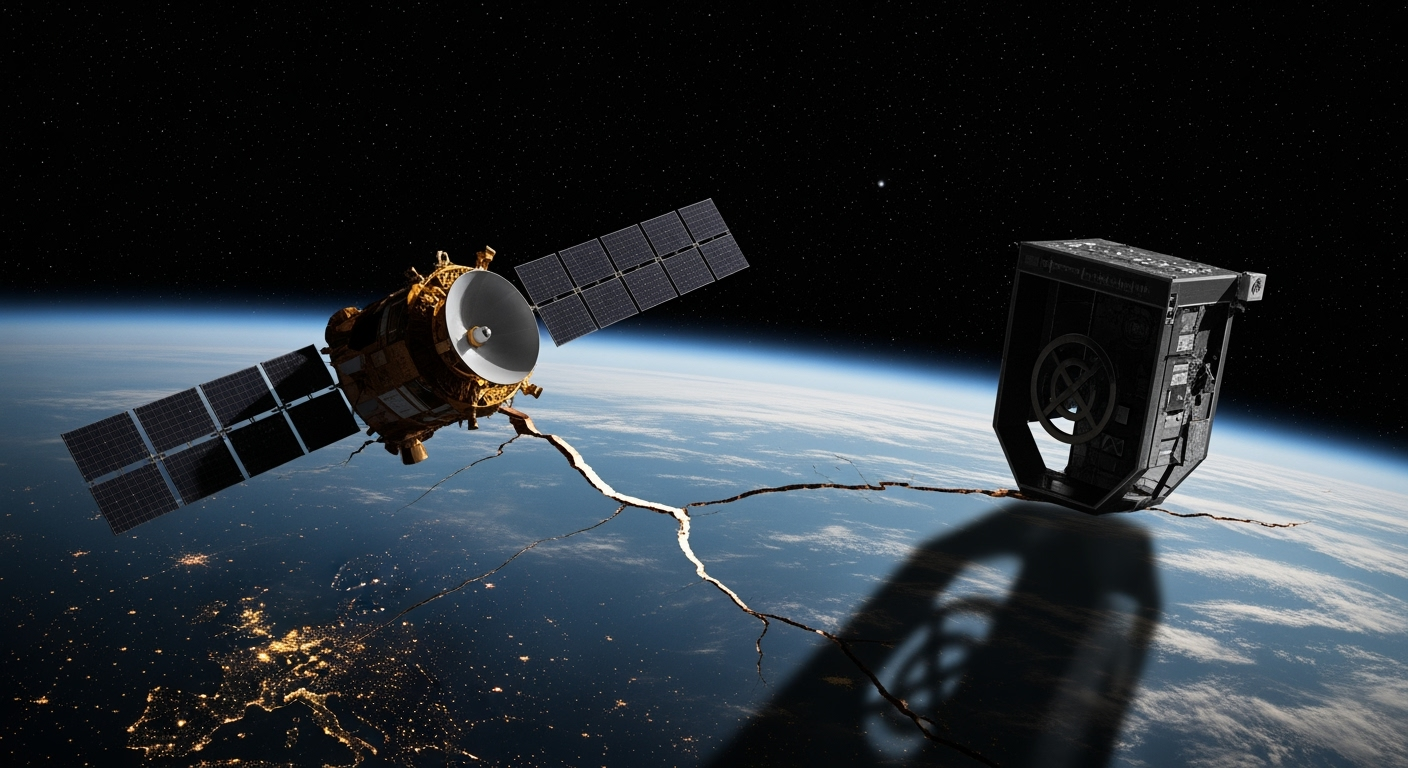Related Articles

Breakthrough Microchip Restores Reading Vision, Offering New Hope for Millions with Sight Loss




The once-distant realm of outer space, long envisioned as a domain of peaceful exploration and scientific advancement, now stands at a critical juncture. A decades-old legal framework struggles to contain escalating geopolitical rivalries, the proliferation of space debris, and the accelerating development of counter-space capabilities, creating what experts describe as a space law crisis in an increasingly insecure world. The implications of inaction extend far beyond orbit, threatening essential services on Earth and raising the specter of a new arms race that could destabilize global security.
The cornerstone of international space law, the 1967 Outer Space Treaty (OST), was forged during the Cold War when only a few nations possessed spacefaring capabilities. This foundational agreement, ratified by over 100 countries, prohibits the placement of weapons of mass destruction in orbit and mandates that space be used for peaceful purposes. However, its simplicity, once a strength, has become a significant limitation. The treaty is considered basic, lacking specific definitions for what constitutes a "weapon in space" beyond nuclear arms, and offers no explicit ban on anti-satellite (ASAT) weapons or other forms of conventional weaponry. As more states, including India, the UAE, and Nigeria, gain access to space, and the private sector, with companies like SpaceX and Blue Origin, deploys vast constellations of commercial satellites, the OST's provisions are increasingly out of step with contemporary realities. Moreover, some nations, such as Luxembourg, have passed their own legislation concerning activities like space mining, challenging the spirit of global treaties designed for collective benefit.
Outer space is facing a dual threat: an overwhelming accumulation of hazardous debris and the accelerating militarization, often bordering on weaponization, of orbital assets. Space debris, comprising defunct satellites, spent rocket stages, and fragments from collisions, poses a severe risk to operational spacecraft. This problem was dramatically exacerbated by events such as China's 2007 ASAT missile test and Russia's Nudol test in 2021, which generated immense quantities of debris, along with the 2009 collision of two satellites, creating thousands more fragments. Such debris travels at speeds up to 28,000 km/h, meaning even small pieces can cause catastrophic damage. Experts warn of the "Kessler Syndrome," a theoretical chain reaction where collisions create more debris, eventually rendering certain orbital regimes unusable for decades or centuries, impacting not just military assets but also the globe's commercial and civilian infrastructure.
Adding to this environmental threat is the ongoing militarization of space, which involves using space resources for military purposes like GPS, satellite communications, and surveillance. However, the line between militarization and outright weaponization—the placement of actual weapons in space—is blurring. The development of advanced counter-space capabilities, including directed energy systems, cyber-attacks on satellite systems, and co-orbital platforms capable of disrupting or destroying other satellites, significantly heightens the risk of conflict. While some argue that space remains "militarized but not weaponized," the current trajectory suggests a dangerous shift. The increasing reliance on space assets for modern warfare means their defense or destruction is seen as crucial for national security.
The escalating competition in space mirrors and amplifies tensions on Earth, with significant geopolitical implications. Major powers, particularly the United States, Russia, and China, are heavily invested in developing their space capabilities, often with a security agenda. This competition is increasingly characterized by a lack of shared understanding and an absence of a compliant international regime, leaving space security in a precarious position. A potential miscalculation or misunderstanding in the congested orbital environment could trigger unintended consequences. Conflict in space could have catastrophic effects on civilian and state interests globally, disrupting vital services like communication, financial transactions, intelligence gathering, internet access, and weather forecasting. The prospect of an arms race in outer space is a real concern, potentially undermining international and national security and disrupting existing arms control instruments.
Despite the daunting challenges, there are ongoing efforts to address the space law crisis, though consensus remains elusive. The United Nations has established working groups, such as the Open-Ended Working Group (OEWG) on the Prevention of an Arms Race in Outer Space, tasked with submitting recommendations to curb the militarization of space. Some Western countries advocate for behavioral norms and soft codes of conduct in space, emphasizing transparency and confidence-building measures. An example of such efforts is the U.S. commitment, announced in April 2022, not to conduct destructive direct-ascent ASAT missile testing, a commitment that later became a UN resolution supported by 37 nations.
Conversely, Russia and China have proposed legally binding treaties to prohibit the placement of weapons in outer space, though these efforts have been hampered by mutual distrust and disagreements among major powers. Beyond these governmental initiatives, non-binding frameworks like the Artemis Accords, spearheaded by the U.S., aim to guide civil space exploration with principles of peaceful use and resource utilization, building upon the foundations of the OST.
Furthermore, some legal scholars argue that existing international law, including the UN Charter and customary international law on the use of force, can be adapted and applied to regulate military activities and limit ASAT weapon use in space. Technological solutions for space debris, such as active debris removal systems like harpoons, nets, and laser ablation, are also under development. However, even these solutions present complex security challenges, as the technologies designed for debris removal could potentially be repurposed for military actions.
The future of outer space security hinges on a collective recognition of the shared risks and a renewed commitment to international cooperation. The current legal framework, designed for a bygone era, is insufficient to manage the complexities of a multi-polar, multi-actor space environment. The rising threats of space debris, the weaponization of space, and unchecked geopolitical competition demand urgent attention and innovative solutions. Safeguarding outer space from conflict and ensuring its sustainable use for peaceful purposes is not merely an academic or military concern; it is a fundamental necessity for the continued functioning of global society and the shared prosperity of humanity. Without robust, enforceable international norms and agreements, the promise of space as a boundless frontier risks devolving into a new arena of Earthly conflict, with potentially devastating consequences for all.